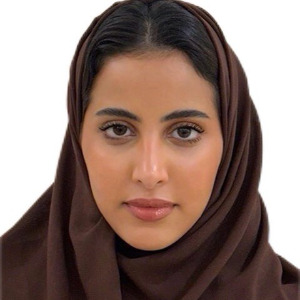Sergey Suchkov, N.D. Zelinskii Institute for Organic Chemistry of the Russian Academy of Sciences, Russian Federation
A new systems approach to diseased states and wellness result in a new branch in the healthcare, namely, Personalized and Precision Medicine (PPM). In this sense, PPM demonstrates an integration of Fundamental & Clinical Science, Design-driven Bioengineering & Translation [....] » Read More










































Title : Paraneoplastic Autoimmune Multiorgan Syndrome or PAMS: Paraneoplastic pemphigus revisited
Sergei A Grando, University of California Irvine, United States
Paraneoplastic autoimmune multiorgan syndrome (PAMS) is characterized by a heterogenous group of signs and symptoms including severe desquamative stomatitis, a polymorphous cutaneous eruption, humoral immunity against plakin proteins, contribution of cell-mediated autoimmunity an [....] » Read More
Title : Modern non-invasive methods for in vivo assessment of skin
Georgios N Stamatas, SGS, France
Recent innovations in spectroscopy and microscopy techniques have enable detailed chemical, structural, and functional analysis without the need for biopsy. The concept of optical biopsy has become a reality allowing clinicians and researchers to obtain molecular and morphologica [....] » Read More
Title : Comparative efficacy of omalizumab and dupilumab in children with Chronic Spontaneous Urticaria (CSU): A retrospective cohort analysis
Molynna Nguyen, University of Toledo, United States
Background: Chronic spontaneous urticaria (CSU) is a mast cell-driven disease characterized by wheals and/or angioedema persisting more than six weeks. Although well-studied in adults, CSU remains under-studied in pediatric populations. This study aimed to compare the efficacy of [....] » Read More
Title : "Mirror mirror on the skin” — A low-cost community strategy to reduce melanoma disparities in Washington, D.C.
Kayla Sampson, Georgetown University School of Medicine, United States
Melanoma remains a preventable yet deadly cancer whose outcomes are disproportionately worse among African Americans, particularly in Washington, D.C., where late-stage diagnoses and higher mortality are concentrated in underserved Wards 7 and 8. Despite lower overall incidence, [....] » Read More
Title : Vitiligo: Not just an aesthetic disorder
Mateja Starbek Zorko, University Medical centre Ljubljana, Slovenia
Vitiligo is a chronic, acquired pigmentary disorder of the skin characterized by the loss of melanocytes and consequent development of well-demarcated depigmented patches. It is a relatively common condition, affecting approximately 0.5–2% of the world-wide population, irre [....] » Read More
Title : Personalized and Precision Medicine as a unique avenue to have the healthcare model renewed to secure the national biosafety: Advanced skincare solutions in individualized cosmetology, reconstructive plastic surgery and the modern beauty
Sergey Suchkov, N.D. Zelinskii Institute for Organic Chemistry of the Russian Academy of Sciences, Russian Federation
This strategy of Personalized and Precision Medicine (PPM) as an upgraded model of healthcare would give a real opportunity to secure preventive, prophylactic, therapeutic and rehabilitative measures whose personalization could have a significantly positive influence on demograph [....] » Read More
Title : Efficacy and safety of CE ferulic and resveratrol serums after fractional CO? laser: A split-face controlled trial
Yu Shi, Shanghai Skin Disease Hospital, China
Background: Ablative fractional CO2 laser is widely used for various skin problems, but it often causes erythema, dyspigmentation and prolonged recovery, which diminish patients’ quality of life. Objective: To assess the efficacy and safety of a topical regimen containin [....] » Read More
Title : Keratinocyte apoptosis by caspase – 3 Immunostaining in histopathology as marker of activity as well as correlation with dermoscopy findings in Cutaneous Lupus Erythematosus (CLE) in skin of color: An observational study.
Subhojit Ray, All India Institute of Medical Sciences, India
Background: Keratinocyte apoptosis is involved in pathogenesis of CLE, but the same as a marker of disease activity is not established in literature. Aim & Objective: To correlate keratinocyte apoptosis stained with Caspase 3 immunostaining with R-CLASI activity (R-CLASI-A [....] » Read More
Title : Rapid repigmentation in segmental vitiligo with crisaborole 2% ointment
Shraddha Mahobia, People's College of Medical Sciences & Research Centre, India
Background: Segmental Vitiligo (SV) is a localized, often early-onset form of vitiligo with a unilateral distribution and rapid stabilization. Topical corticosteroids and calcineurin inhibitors remain mainstays but are limited by side effects and variable efficacy. Crisaboro [....] » Read More
Title : Rare skin diseases in Vietnam
Tran Hau Khang, National Hospital Dermatology and Venereology, Vietnam
A rare disease is as a condition that affects very few people. According to data from the National Organization for Rare Disease (NORD), there are more than 7000 rare diseases and the total number of people living with a rare disease is estimated at 300 millions including c [....] » Read More
Title : Antifungal resistance in dermatophytes: A growing concern
Jannatul Sharmin Joarder, Dhaka Medical College Hospital, Bangladesh
Dermatophytes are a group of keratinophilic fungi responsible for superficial infections of the skin, hair and nails collectively known as dermatophytosis.In recent years, there has been a notable rise in antifungal resistance among dermatophyte species, posing a significant publ [....] » Read More
Title : Beyond the mirror
Ejigayehu Kassa, Laba Media and Communications Addis Abeba, Ethiopia
This research offers a paent-expert perspecve on the profound psychological journey accompanying chronic, visible dermatoses. Moving beyond tradional clinical definions of "cure," this research invesgates the crical, yet oen unaddressed, process of psychosocial healing [....] » Read More
Title : Confidence in recognising dermatological conditions in UK primary care: A national cross-sectional survey
Chandhini Suresh, United Lincolnshire Hospitals NHS Trust, United Kingdom
Background: Skin conditions form a significant part of primary care workload, yet confidence in their recognition and management is variable. This study explored confidence levels across conditions and roles, and examined the impact of additional dermatology training. Met [....] » Read More
Title : CO2 laser labiaplasty vs. conventional surgical labiaplasty: A comparative clinical approach in outpatient practice
Benosman Sihem, Societe Algerienne De Medecine Esthetique, Algeria
Labiaplasty has gained increasing attention as part of intimate aesthetic and functional genital rejuvenation. Traditionally performed using scalpel-based surgical techniques, this procedure is now evolving with the integration of laser technology. This presentation aims to compa [....] » Read More
Title : New possibilities for treating ulcerative skin lesions
Mavlyanova Sahnoza Zakirovna, Republican Specialized Scientific and Practical Medical Center of Dermatovenerology and Cosmetology of the Ministry of Health of the Republic of Uzbekistan, Uzbekistan
The abstract presents new approaches to treating erosive-ulcerative lesions of the skin in patients with severe skin diseases (acantholytic pemphigus, trophic ulcer, chronic ulcerative pyoderma). As a local preparation, the article discusses the anti-inflammatory, wound-hea [....] » Read More
Title : Clinical efficacy and safety of a novel microfocused ultrasound for facial rejuvenation: a prospective study
Congying Li, Shanghai Skin Disease Hospital, China
Introduction: The novel microfocused ultrasound has become a popular approach for tightening the sagging of fat pad-induced laxity in China. Nevertheless, robust evidence, particularly the histological studies supporting the rejuvenative effects, is lacking. Objective: This st [....] » Read More
Title : Dermatitis passivata: Unfolding the layers of self neglect
Surajbala Khuraijam, Manipur Health Services, India
Introduction: Diogenes syndrome is mostly seen in geriatric or demented patients. It is a behavioural disorder characterized by self neglect, social withdrawal, poor personal and domestic hygiene. A milder form of this is dermatitis passivata. Dermatitis passivata is a psychoderm [....] » Read More
Title : Bazex syndrome–like paraneoplastic acrokeratosis
Shraddha Mahobia, People's College of Medical Sciences & Research Centre, India
Background: Bazex syndrome is a rare paraneoplastic acrokeratosis, most commonly associated with squamous cell carcinomas of the upper aerodigestive tract. Cutaneous manifestations may precede the diagnosis of malignancy and are often resistant to conventional dermatologic t [....] » Read More
Title : Ethnic differences in biologic therapies for atopic dermatitis
Dalia Al Temimi, Barts and The London School of Medicine and Dentistry, United Kingdom
Introduction & Objectives: Atopic dermatitis is the most prevalent skin condition globally and has become a significant public health concern due to its impact on quality of life. In recent years, the introduction of biological therapies has revolutionised care by targeting s [....] » Read More
Title : Exclusive cutaneous form of rosai-dorfman disease : Two case reports
Chalouli Lamia, Military Hospital of Algeria, Algeria
Introduction: Rosai-Dorfman disease (RDD) is a rare, benign non-Langerhans cell histiocytosis primarily affecting the lymphnodes, practically those in the cervical region. Cutaneous involvement is common and can be an initial indicator of the disease. However, diagnosing RDD base [....] » Read More